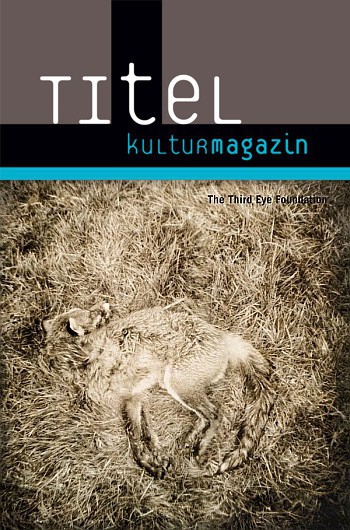Music | Bittles’ Magazine: The music column from the end of the world
Jazzanova are the type of band who could make even the most committed of haters love house. Over twenty-odd years the musical collective, whose members include Alex Barck, Stefan Leisering, Jürgen v. Knoblauch, Claas Brieler and Axel Reinemer, have brought out some of the most sensuous and downright funky sounds to grace any stereo. By JOHN BITTLES
From their first self-titled EP released in 1997 the group have followed their own multi-flavoured path. Never content to follow cliches or trends, their vocal-rich output is a sophisticated and musical take on dance music. At its best the average Jazzanova track can resemble Stevie Wonder jamming with Mad Mike one minute, Terry Callier collaborating with Larry Heard the next.
This March the band release Jazzanova – The Remixes 2006-2016, a fabulous collection of recent refits. Out now on their own Sonar Kollektiv label, the album follows on from previous remix compilations 1997-2000, and 2002-2005, showcasing the talents of a group who understand the power of a good groove. Over nine tracks, songs from the likes of Atjazz, Outlines and Furry Phreaks get rebooted in Jazzanova’s own unique style to create a record which sounds as timeless as the sun. From the slow, sultry soul of Skybreaks by Heritage Orchestra, to the wholesome crunch of Paul Randolph’s Believer, The Remixes 2006-2016 is the perfect antidote for those sick and tired of generic house thumps. Star of the show is the gorgeous emotional swell of their refit of Hugh Masekela’s Stimela, a song which would make the ideal soundtrack to falling in love at a Gilles Peterson gig. Do yourself a favour and have a listen to it and other tracks from the record here.
In the following interview Jazzanova discuss the new album, the art of remixing, the early days at Delicious Doughnuts, their label Sonar Kollektiv, Hugh Masekela, and lots more.
So, before I wear my ears out listening to the album on repeat, we had better begin…

You formed Jazzanova back in 1995. How did you first meet and what made you decide to work together to create music?
Axel Reinemer and Stefan Leisering where already active since 1989 and since 1993 mostly producing German hip hop but also jazzy trip hop instrumentals. Jürgen v. Knoblauch, Claas Brieler and Alex Barck started as a DJ-team in 1995 in the Berlin based club Delicious Doughnuts where Axel and Stefan where also often guests. 1996 we started to produce three tracks all together which where released on an EP in 1997 which was privately pressed and distributed from Jürgen’s flat. After the success of the Fedime’s Flight EP we received remix requests from UK, Japan,US … etc and what under the name of Jazzanova started as a loose collaboration between record collecting DJs and record collecting hip hop producers became a lasting project that exists now for 20 years.
Your new album Jazzanova – The Remixes 2006-2016 came out on the 24th of March. What was the idea behind the LP?
From our work for the United Future Organization (1997) on we’ve put a lot of effort and love for detail into our remixes. It’s like producing and writing our own music. Since our remixes were quite successful in the late 90s we decided to release them on compilations. As a compilation on its own but also in addition with our albums we think it really makes sense to have them for listening collected on one release together. Our albums and our remix compilations give an inside view into different stages of the past of Jazzanova. If you listen to The Remixes 1997-2000, In-Between, The Remixes 2002-2005, Of All The Things, The Remixes 2006-2016 in that order you will hear how remixing influenced our regular albums and then also how writing and producing our own music influenced our remix works for others and that we are developing steadily.
If you had to pick one song to sell the album, which would it be and why?
Hugh Masekela – Stimela (Jazzanova Remix).
Hugh Masekela is a living legend and Stimela (Coal Train) is probably one of his most important songs ever. Since 1974 Hugh has recorded the song in various versions and has performed it live ever since. We wanted to preserve and support the serious and important message of the song and re-played melody parts on the piano (with muted piano-strings) and layered several harmony-voices over and over. We were quite surprised by the result as the sound almost reminded us of a plucked strings-ensemble. We programmed some drum grooves, played congas, more piano bits and the bassist of our live band Paul Kleber added acoustic bass. The whole remix was like a sonic experiment for us, which, we believe, adds new flavour to the original, while still remaining deep and serious. And it represent at its best how we are doing remixes and also how we work in the studio.
This is the third collection of your remixes after 1997-2000 and 2002-2005, all of which showcase why your refits are held in such high esteem. What is the secret to making a great remix?
We always feel inspired by listening intensively to the original song (and all its single elements) but also by knowing more of the original artists’ work, which includes listening to other songs by them if they are new to us.
 Going an unexpected way while being respectful with the original song is how we do it. And of course we think about playing this remix in our DJ-sets too. Musically there isn’t a real strict formula that we follow as we like quite a range of music styles that can make people dance.
Going an unexpected way while being respectful with the original song is how we do it. And of course we think about playing this remix in our DJ-sets too. Musically there isn’t a real strict formula that we follow as we like quite a range of music styles that can make people dance.
One of the highlights of the album is your version of Listen To The Drums by Outlines, a song I could happily listen to for hours on repeat. Can you talk us through how it came about?
Irfan and his Outlines Project at that time was partly recorded and mixed in our Jazzanova Studio and released on our Sonar Kollektiv label. We (including Clara Hill, a singer who was working with us in the studio at the time) were convincing Irfan to sing on his tunes as he was a little unsure about it in the beginning. It was definitely a change in his career. And for us it was a no-brainer to do a remix for him as he was part of our Sonar Kollektiv / Jazzanova family.
You turn Parallels by Atjazz feat. Dawne B into a gorgeously soul-infused slice of dance floor goodness. What are the vital ingredients to creating a song which will work in a club?
Its definitely about the right arrangement of the remix. The perfect build up and the right breaks.
We always experiment with nice/fat bass sounds (be it synths, samples or e-basses) and drum sounds that we like and how they interact. Not being afraid of trying new things too, but also keeping an ear on sound.
Of course also the groove is important. We definitely love irresistibly infectious grooves that have a little special something.
Your aforementioned version of Hugh Masekela’s Stimela is one of my favourites, its soulful vocals and slow build groove a treat for the ears. When you first sit down to begin the process of remixing a track, do you already have an idea of how the finished piece will sound?
Partially yes. In the first stage we create parts by programming, which we know quite well, how they will sound in the end. But other parts we are recording (trying live with mics, amps, synths, percussion etc) in the studio are part of experimenting. Also trying around with effects like tape machines etc are part of that second stage of work on a mix. Finally we do the arrangement based on what parts and sounds we created. And of course more ideas come up during the arranging process too.
So … we surprise ourselves when working on a remix as we try to keep the whole process quite open.
The album is released on your own label Sonar Kollektiv. What made you set up your own record label way back in 1997?
In 1997 we released our first EP on our own which marks the beginning of our label, just out of the pure need to sell/distribute our music. But also we were (and of course still are) connected with a lot of Berlin based DJs and producers and also with musicians from all over the world. We created a label where a lot of them could release their music. In the following years we received a lot of demos and released a lot and the label became a solid part of our Jazzanova universe.
And we are open to DJ music of many styles but also to bands and artists that we like like, for instance Micatone, Fat Freddy’s Drop, Forss, Âme … etc.
What have been the key releases for the imprint so far?
There are a few to be honest. From back in the days, for example the first Fat Freddy’s Drop album, Âme – Rej, Wahoo, or Outlines, or compilations like Jazzanova…Mixing, the Secret Love series and Paz E Futebol. But we have some younger releases that were really important for us, such as Fetsum, or Pete Josef.
What else can we expect from Sonar Kollektiv in 2017?
For this year we have a new signing from Belgium. Liz Aku will release her debut album in May. Besides that we’re working on new albums from Radio Citizen, Glow In The Dark, Micatone, The Black 80s, Pete Josef, Fetsum and some new names to drop. And of course some new music from Jazzanova. Be sure you don’t miss them ;)
Do you have any final words for our readers?
At the moment we’re working on our third studio album which will be released in early 2018.
A Jazzanova Live Band tour will follow, more DJ-shows and some remixes for other artists too.
Be prepared for more Jazzanova music and performances in 2017 and 2018!
Jazzanova, The Remixes 2006-2016 is available now from the bands‘ Bandcamp page and all good record stores. Do yourself a favour and track this down now.
| JOHN BITTLES
| Titelbild: © BfF Philipp Jester










